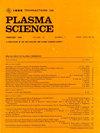Optimized Design for Armature Lightweighting and Contact Pressure Distribution Uniformization Based on BP Neural Network and Genetic Algorithm
IF 1.3
4区 物理与天体物理
Q3 PHYSICS, FLUIDS & PLASMAS
引用次数: 0
Abstract
The variation in armature structural parameters has a profound impact on electromagnetic railgun performance. In order to enhance the electrical contact performance of armature and rail interfaces and achieve armature lightweighting, a novel approach is proposed that combines backpropagation (BP) neural networks with genetic algorithms for optimizing armature structures. Employing Latin hypercube experiments, structural dimension samples were extracted for both flat armatures and convex-arc armatures, and a training dataset was generated through finite element simulations. Mapping models were constructed based on BP neural networks to relate the contact pressure distribution coefficient, maximum stress, mass, and total contact force individually to the armature structural parameters. Incorporating a comprehensive evaluation index denoted as “W” as the fitness function for the genetic algorithm, global optimization of armature size was carried out. The optimized results were subsequently validated through finite element comparative analysis. The outcomes revealed that, following optimization of flat armatures, a 10.4% reduction in mass and a 55.7% decrease in the contact pressure distribution coefficient were achieved. For convex-arc armatures, a 25% reduction in mass and a 46.5% decrease in the contact pressure distribution coefficient were observed. Simultaneously achieving armature lightweighting and improving the uniformity of contact pressure distribution on armature and rail interfaces, this methodology offers a novel perspective and serves as a valuable reference for addressing the optimization of armature structures under complex operating conditions.基于 BP 神经网络和遗传算法的电枢轻量化和接触压力分布均匀化优化设计
电枢结构参数的变化对电磁轨道炮的性能影响深远。为了提高电枢和轨道接口的电接触性能并实现电枢轻量化,提出了一种结合反向传播(BP)神经网络和遗传算法的新方法来优化电枢结构。通过拉丁超立方实验,提取了平面电枢和凸弧形电枢的结构尺寸样本,并通过有限元模拟生成了训练数据集。基于 BP 神经网络构建了映射模型,将接触压力分布系数、最大应力、质量和总接触力分别与电枢结构参数联系起来。在遗传算法中加入了以 "W "表示的综合评价指标作为拟合函数,对电枢尺寸进行了全局优化。随后,通过有限元对比分析对优化结果进行了验证。结果显示,扁平电枢优化后,质量减少了 10.4%,接触压力分布系数降低了 55.7%。凸弧形电枢的质量减轻了 25%,接触压力分布系数降低了 46.5%。在实现电枢轻量化和改善电枢与导轨界面接触压力分布均匀性的同时,该方法提供了一个新的视角,为解决复杂工作条件下的电枢结构优化问题提供了有价值的参考。
本文章由计算机程序翻译,如有差异,请以英文原文为准。
求助全文
约1分钟内获得全文
求助全文
来源期刊

IEEE Transactions on Plasma Science
物理-物理:流体与等离子体
CiteScore
3.00
自引率
20.00%
发文量
538
审稿时长
3.8 months
期刊介绍:
The scope covers all aspects of the theory and application of plasma science. It includes the following areas: magnetohydrodynamics; thermionics and plasma diodes; basic plasma phenomena; gaseous electronics; microwave/plasma interaction; electron, ion, and plasma sources; space plasmas; intense electron and ion beams; laser-plasma interactions; plasma diagnostics; plasma chemistry and processing; solid-state plasmas; plasma heating; plasma for controlled fusion research; high energy density plasmas; industrial/commercial applications of plasma physics; plasma waves and instabilities; and high power microwave and submillimeter wave generation.
 求助内容:
求助内容: 应助结果提醒方式:
应助结果提醒方式:


